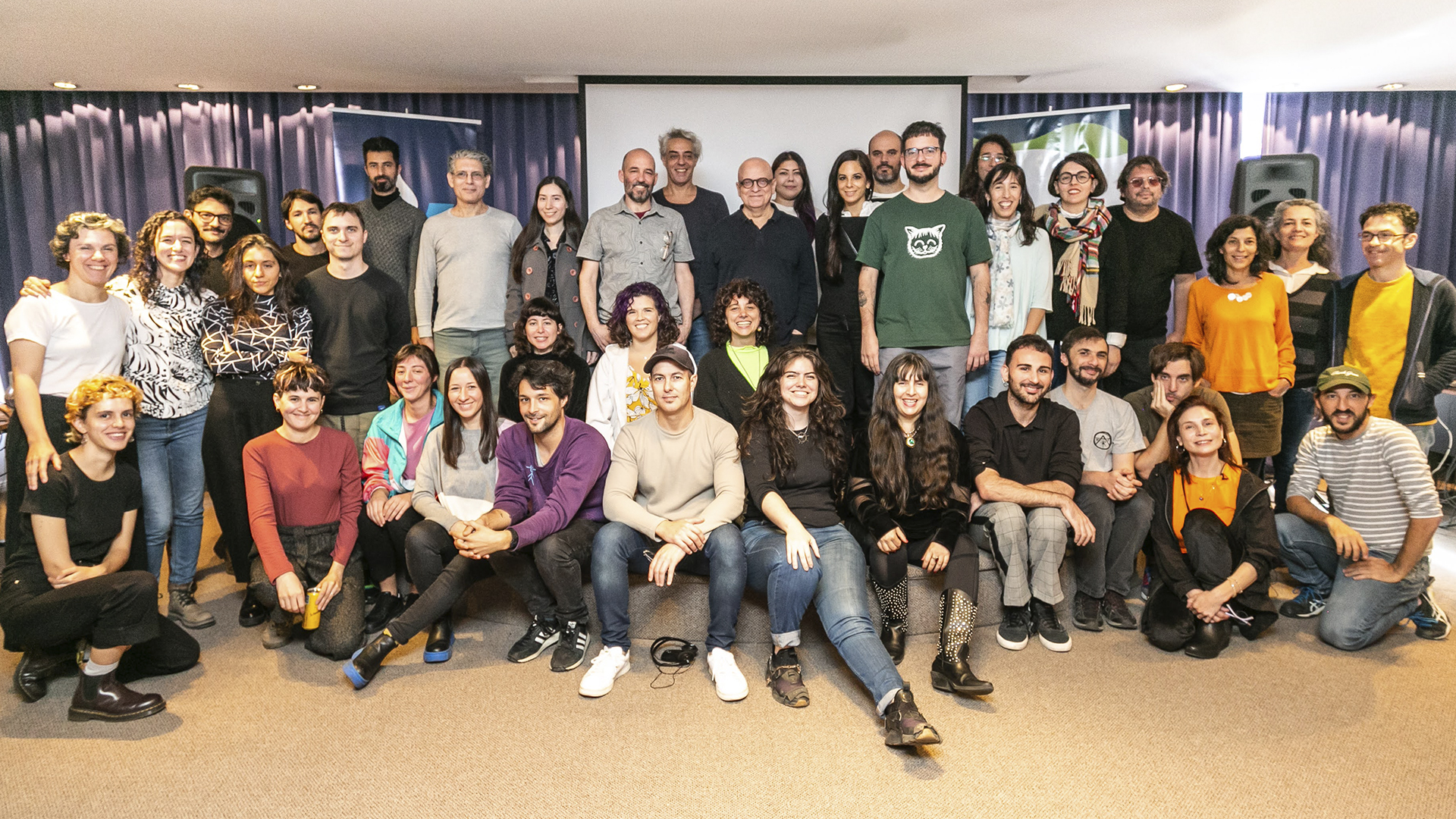PRESENTE CONTINUO
The Presente continuo. Arte - Ciencia - Tecnología (Present Continuous. Art - Science - Technology) program was born from the recognition that the technological advancements in artificial intelligence, gene editing, and biotechnology are leading us into a future where the traditional frameworks are becoming inadequate for understanding the present and shaping the future.
We are guided by two questions: How are the 4th industrial revolution technologies changing the way we produce art? And how can art help us understand the world that is being shaped by these technologies?
Presente Continuo is a program for artistic and philosophical training, for production of works, ideas, descriptions and narratives.
Program participants include artists, philosophers, scientists, and technologists selected at the national level. They will take part in three meetings and workshops led by global pioneers in discussions concerning the future of art and humanity, in a world shaped by new technologies. We hope that the program will become a space for exchange, production and debate in order to explore possible answers to these questions.
Objectives
- To develop actions that promote debate, exchange and training on the impact and use of 4.0 technologies (augmented reality, artificial intelligence, locative media, digital media, among others) in transdisciplinary projects with various creative and scientific sectors.
- To promote residencies, production and exhibition of projects exploring transdisciplinary forms of expression and interaction with diverse audiences and spaces.
- To produce digital contents and methodological tools that contribute theoretical material to the bibliography on the regional topics
Rationale
Against the backdrop of the fourth industrial revolution, which permeates every societal aspect, artistic practices in dialogue with data science, algorithms, artificial intelligence, biotechnology, robotics, among others, become a field for experimentation. This inspires projects that present new aesthetic, epistemological, and conceptual challenges.
The productions where art, science and technology converge, in many cases leave the traditional exhibition spaces, are made in collaborative formats, and require other instances of legitimization, which are different from those of the traditional arts.
With over half a century of interactions between art, science and technology, and in a globalized world, there is a trend in artistic productions towards situated practices, linked to local communities, concerned about environmental crises and the care of the planet, and with a critical view on how technologies operate between subjects and their environment.
In addition, the commissioners of these projects have expanded and the private sector is beginning to empathize with the new topics and is becoming an important financier.
Traditional institutions, such as museums, include in their programs intermedia projects that coexist with historical collections, and the public space becomes the main stage for these proposals.
Thus, this program becomes a new platform for debate, training and production by local and international experts and institutions that are reflecting on these issues, generating knowledge, ideas, narratives, works, and interdisciplinary projects.


